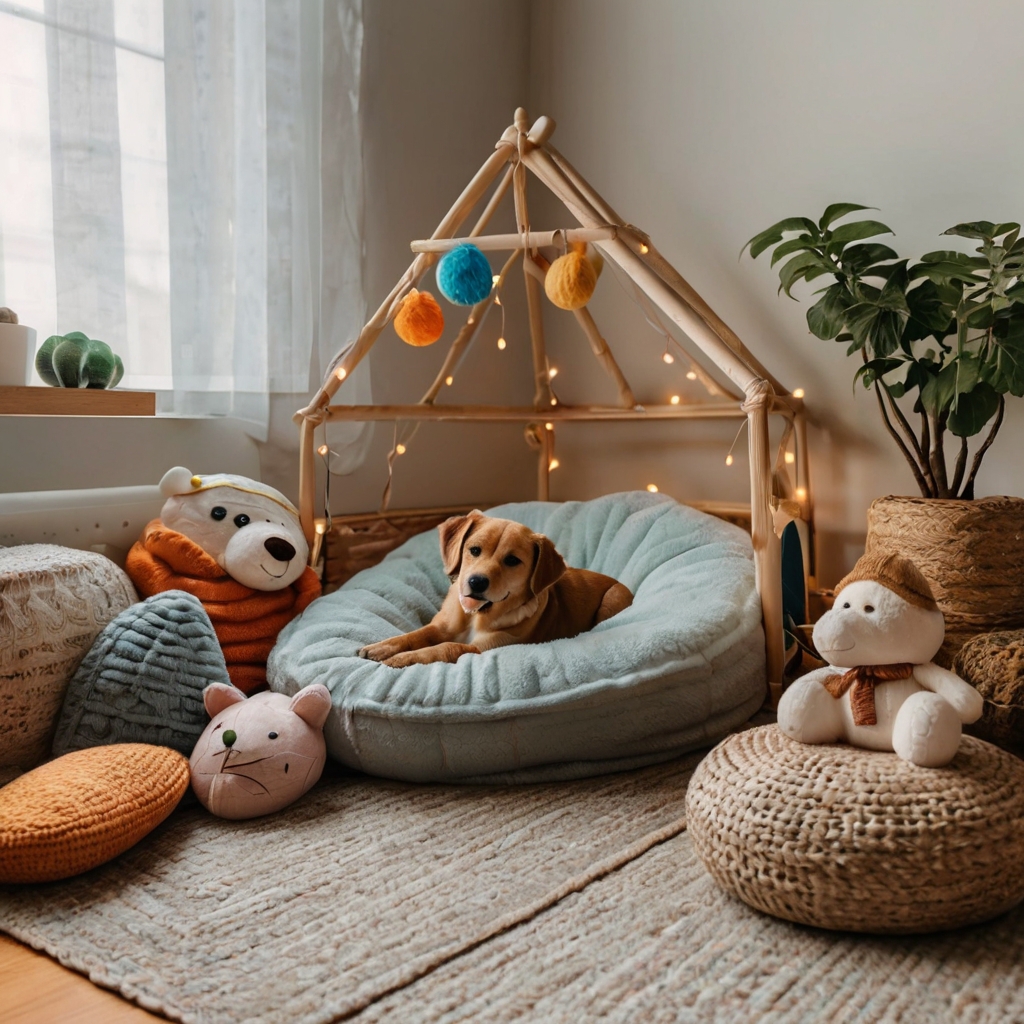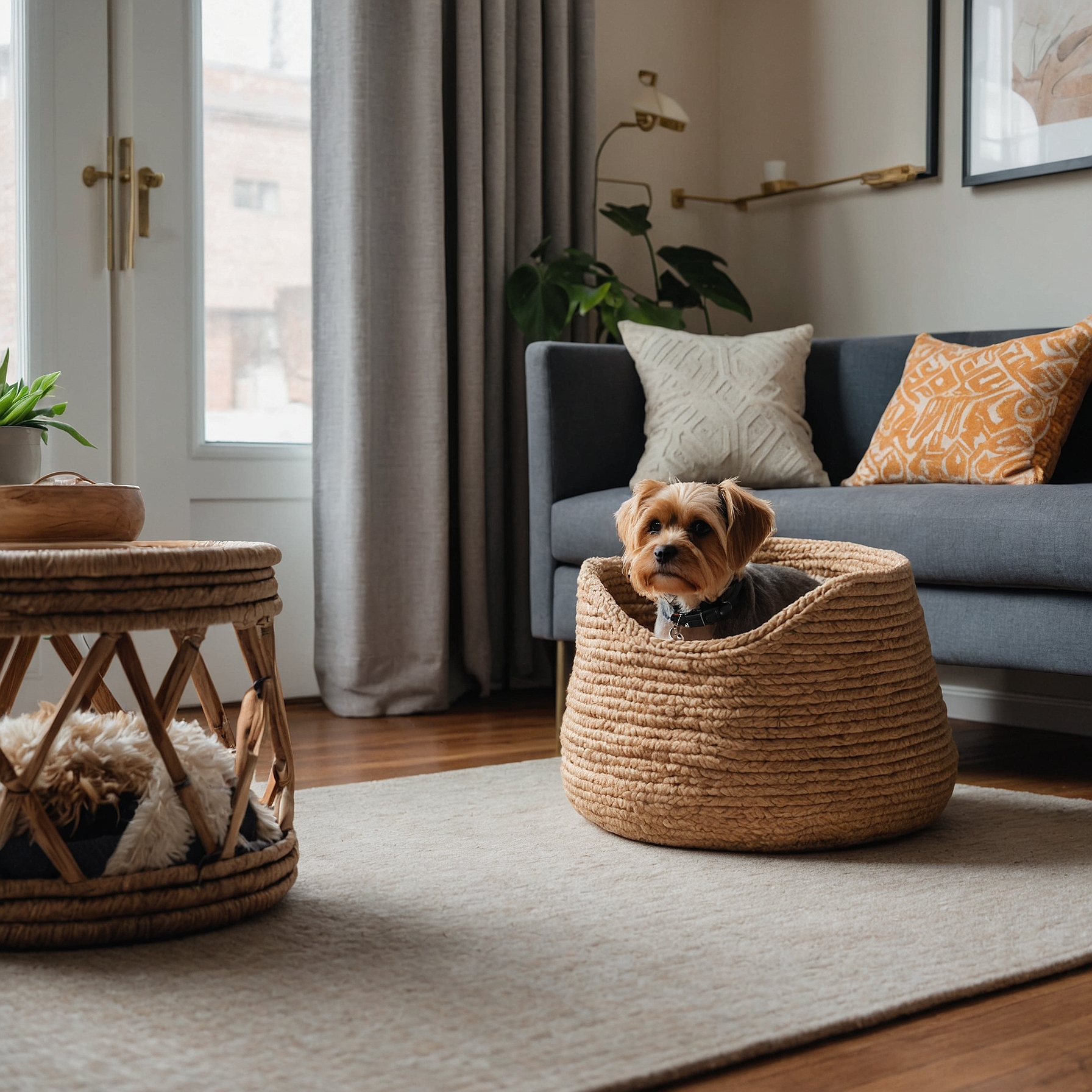Learn how to create a cozy pet corner in your home. From choosing the right spot to adding personal touches, give your pet a space to feel safe, comfortable, and loved.
Creating a dedicated pet corner in your home is a simple yet powerful way to show your furry friend they’re truly part of the family. Whether you live in a spacious house or a small apartment, giving your pet a space to rest, play, and feel safe can significantly improve their well-being. Here’s how to set up the perfect cozy corner for your pet.
1. How to Create a Cozy Pet Corner: Choose a Quiet, Low-Traffic Area
The first step in creating a cozy pet corner is selecting a spot that’s away from noise, drafts, and high foot traffic. Pets appreciate peace and a sense of safety, especially during naps or when they need some alone time. Corners near windows can work well if your pet enjoys natural light, but make sure the area doesn’t get too hot or cold.
If you live in a small apartment or have limited space, a quiet corner in a less busy part of your home, such as a hallway or unused nook, is perfect. This ensures your pet has a peaceful retreat while staying close to the family.
2. Invest in a Comfortable Bed: Essential for Your Pet’s Comfort
A soft, supportive bed tailored to your pet’s size is essential for their comfort and well-being. Choose materials that are washable, especially if your pet sheds a lot or enjoys lounging outside. Orthopedic padding is a great choice if your pet is older or has joint issues.
Cats often prefer cave-style beds or hammocks, where they can feel secure and hidden, while dogs may enjoy bolster beds that offer neck support. Make sure the bed is large enough for your pet to comfortably curl up in, ensuring they feel cozy and safe.
3. Add Personal Touches: Make It Feel Like Home
Personalizing your pet’s corner helps make the space feel more like their own. Place your pet’s favorite toys, a cozy blanket with your scent, or a soft pillow nearby. These familiar items can comfort them and make them feel secure.
For cats, consider adding a scratching post or a small climbing tree to keep them entertained and relaxed. For dogs, a few chew toys or a soft plush toy can help them feel at ease in their space. Adding these touches will not only make the corner more inviting but also encourage your pet to spend time there.
4. Keep Essentials Close By: Convenience is Key
Make sure you have essential items near the cozy corner to make your pet’s life easier. Include a small water bowl nearby (especially for older pets or during warmer seasons) to keep them hydrated. A sealed treat jar can also be placed nearby for positive reinforcement during training sessions or just as a little reward.
However, avoid placing food bowls in the resting zone, as this can lead to messes and make the area less restful. Keeping the corner tidy and free from food distractions will ensure your pet associates the area with relaxation and comfort.
5. Ensure Safety and Cleanliness: A Pet-Friendly Zone
To ensure safety, make sure any dangerous items, such as wires or small objects, are out of your pet’s reach. Use a non-slip mat or rug under the bed to prevent slipping, especially if your pet is older or has mobility issues.
Regular cleaning is also important to maintain a safe environment. Vacuum the area often to reduce fur, allergens, and dirt, ensuring your pet’s space remains fresh and inviting. A clean, safe, and comfortable space is essential for your pet’s well-being.
Why a Cozy Pet Corner Matters
Pets, like people, need a space where they feel secure and comfortable. A dedicated pet corner not only improves your pet’s quality of life but also helps reduce anxiety, especially in busy households or when routines change. It’s important that your pet has a sanctuary where they can retreat when they need some quiet time or rest.
Final Tip: Follow Your Pet’s Lead
Observe your pet’s habits and preferences. Sometimes, the perfect spot for a pet corner is one they choose themselves. If your pet is drawn to a specific area of your home, take note of this and consider adjusting the space accordingly. They will often know where they feel most comfortable!
Read More:


